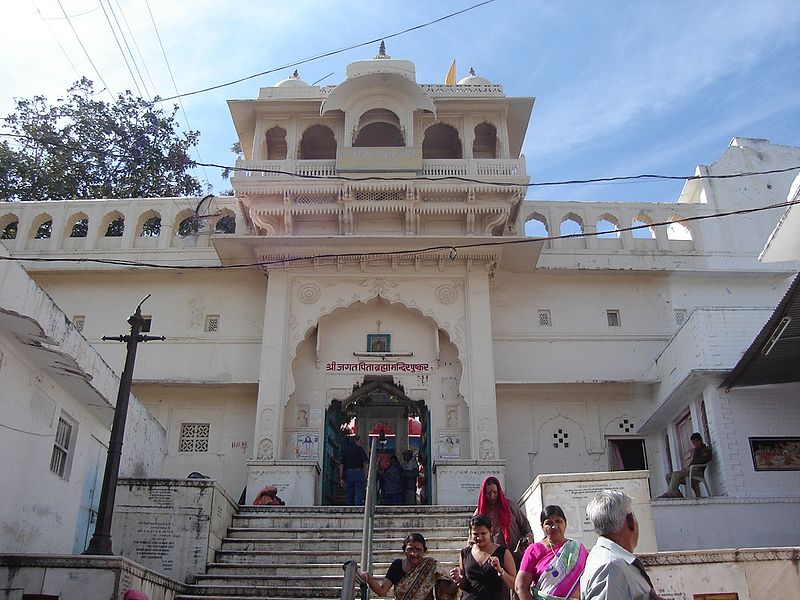Pushkar is said to have over 500 temples (80 are large and the rest are small); of these many are old that were destroyed or desecrated by Muslim depredations during Mughal emperor Aurangzeb’s rule (1658–1707) but were re-built subsequently; of these the most important is the Brahma temple. Though the current structure dates to the 14th century, the original temple is believed to be 2000 years old.The temple is described to have been built by sage Vishwamitra after Brahma’s yagna.[2] It is also believed that Brahma himself chose the location for his temple. The 8th century Hindu philosopher Adi Shankara renovated this temple, while the current medieval structure dates to Maharaja Jawat Raj of Ratlam, who made additions and repairs, though the original temple design is retained.

Pushkar is often described in the scriptures as the only Brahma temple in the world, owing to the curse of Savitri, and as the “King of the sacred places of the Hindus”. Although now the Pushkar temple does not remain the only Brahma temple, it is still one of very few existing temples dedicated to Brahma in India and the most prominent one dedicated to Brahma. International Business Times has identified Pushkar Lake and the Brahma temple as one of the ten most religious places in the world and one of the five sacred pilgrimage places for the Hindus, in India.



